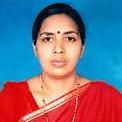International Journal of Information Technology and Computer Science (IJITCS)
IJITCS Vol. 10, No. 5, 8 May 2018
Cover page and Table of Contents: PDF (size: 805KB)
An Edge based Clustering Technique with Self-Organizing Maps
Full Text (PDF, 805KB), PP.30-39
Views: 0 Downloads: 0
Author(s)
Index Terms
Filter, edge, sub image, feature vector, neural network
Abstract
Recently, artificial neural networks are fund to be efficiently used in clustering algorithms. So, the present paper focuses on the development of a novel clustering method based on artificial neural networks. The present paper uses an enhancement filter to enhance the segments in the input image. After this, the various sub images are generated and features are computed for each sub and edge image. Finally, the Self Organizing Map (SOM) is used for clustering process. The proposed novel method is evaluated with a database of 795 leaf images. Further various Probability Distributed Functions (PDFs) are used to evaluate the efficacy of the proposed method. The performance measures of the proposed method indicate the efficiency of the extended clustering method with SOM.
Cite This Paper
G. Chamundeswari, G. P. S. Varma, Ch. Satyanarayana, "An Edge based Clustering Technique with Self-Organizing Maps", International Journal of Information Technology and Computer Science(IJITCS), Vol.10, No.5, pp.30-39, 2018. DOI:10.5815/ijitcs.2018.05.03
Reference
[1]Hichem Frigui, “Clustering: Algorithms and Applications,” Image Processing Theory, Tools & Applications,1-11, 2008.
[2]S.F.d. Silvam B. Brandoli, D.M. Eler, “Silhouette-based feature selection for classification of medical images,” IEEE 23rd International Symposium on Computer-Based Medical , 315-320, 2010.
[3]T.J. Zhang, D. Chen, “Study on Efficient Image Indexing Method Based on Adaptive Fuzzy Clustering,” 2nd International Conference on Industrial and Information Systems, 200-201, 2010.
[4]L. Chen, S. Chen, “New Shadowed Fuzzy C-Means Algorithm for Image Segmentation,” 3rd International Conference on Informative and Cybernatics for computational social, 43-46, 2016.
[5]G. Li, J. Zhuang, H. Hou, D. Yu, “An Improved Clonal Selection Classifier Incorporating Fuzzy Clustering,” International Conference on Measuring Technology and Mechatronics Automation, 179-182, 2009.
[6]G.R. Reddy, P. Yugander, J.S. Babu, R.R. Rao, “Possibilistic Fuzzy C-Means Algorithm for Fingerprint Image,” International Conference on Devices, Circuits and Systems (ICDCS), 249-253, 2012.
[7]H. Wang, G. Liu, H. Ke, L. Song, “A Vehicle License Plate Detection Method based on Clustering Analysis,” International Conference on Computer Science and Service System, 1413-1416, 2012.
[8]J. Cui, F. Liu, Z. Li, J. Li, “Image Retrieval Based on Manifold Learning and Incorporate Clustering,” Global Congress on Intelligent Systems, 544-548, 2009.
[9]D. Onder, B. Karacali, “Automated Clustering of Histology Slide Texture using Co-occurrence based Grayscale image features and Manifold learning,” 14th National Biomedical Engineering Meeting, 1-4, 2009.
[10]A. Talwalkar, S. Kumar, H. Rowley, “Large Scale Manifold Learning,” IEEE Conference on Computer Vision and Pattern Recognition, 1-8, 2008.
[11]M.H. Everts, H. Bekker, J.B.T.M. Roerdink, “Visualizing White Matter Structure of the Brain using Dijkstra’s Algorithm,” 6th International Symposium on Image and Signal Processing and Analysis, 569-574, 2009.
[12]J. Fan, J. Wang, “Polarimetric SAR Image Segmentation based on Spatially Constrianed Kernel Fuzzy C-Means Clustering,” OCEANS 2015 - Genova, 1-4, 2015.
[13]F. Folino, C. Pizzuti, “A Comorbidity-based Recommendation Engine for Disease Prediction,” IEEE 23rd International Symposium on Computer-Based Medical Systems (CBMS) , 6-12, 2010.
[14]D. C. Hernandez, D. Seo, K.H. Jo, “Robust Lane Marking Detection based on Multi feature fusion,” 9th International Conference on Human System Interactions (HSI) , 423- 428, 2016.
[15]A.H.Idrobo, Y. Schwartz, G. Varoquax, B. Thirion, “Improving sparse recovery on structured images with bagged clustering,” International workshop on Pattern Recognition in neuroImaging, 73-76, 2015.
[16]Z. Kang, C. Peng, Q. Cheng, “Robust Subspace Clustering via Smoothed Rank Approximation,” IEEE Signal Processing Letters, vol. 22, No. 11, 2088-2092, 2015.
[17]Y. Liu, J. Liu, Z. Li, J. Tang, H. Lu, “Weakly-Supervised Dual Clustering for Image Semantic Segmentation,” IEEE conference on Computer Vision and Pattern Recognition, 2075-2082, 2013.
[18]L. Xiaoqi, Z. Baohua, G.U.Yong, “Medical Image Fusion Algorithm based on clustering neural network,” 1st International Conference on Bioinformatics and Biomedical Engineering , 637-640, 2007.
[19]M. Markou, S. Sameer, “A Neural Network based novelty detector for image sequence analysis,” IEEE transactions on pattern analysis and machine intelligence, vol. 28, no. 10, 1664-1677, 2006.
[20]S. Sinha, S. Deb, “Image Segmentation by Intelligent Clustering Technique,” IEEE Recent Advances in Intelligent Computational Systems (RAICS), 272-276, 2013.
[21]Ajay Kumar, Shishir Kumar, “Density based Initialization Method for K-means Clustering Algorithm,” International Journal of Intelligent Systems and Application, 10, 40-48, 2017.
[22]S. K. Ali, Z.N. Azeez, A.A.H.Ouda, “A New Clustering Algorithm for Face Classification,” International Journal of Information Technology and Computer Science, 6, 1-8, 2016.
[23]M.E. Agza, W.M.Ashour, “Efficient and Fast Initialization Algorithm for K-means Clustering,” International Journal of Intelligent Systems and Applications, 1, 21-31, 2012.


